#doric order
Text

View of the Temples of Paestum in the evening light | Water Buffalo in the Campagna
by Edmund Hottenroth
#edmund hottenroth#art#paestum#temples#temple#landscape#water buffalo#mediterranean#italy#magna grecia#campagna#europe#european#animals#buffalo#southern italy#ruins#ancient greek#history#doric order#campania#salerno
156 notes
·
View notes
Photo

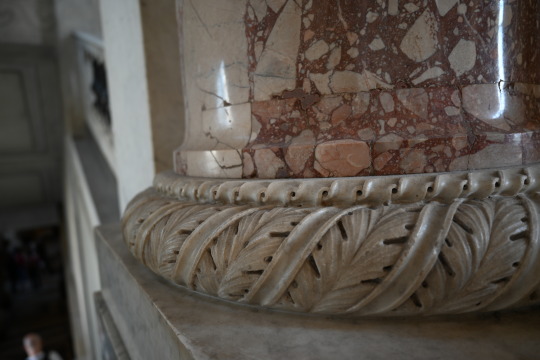


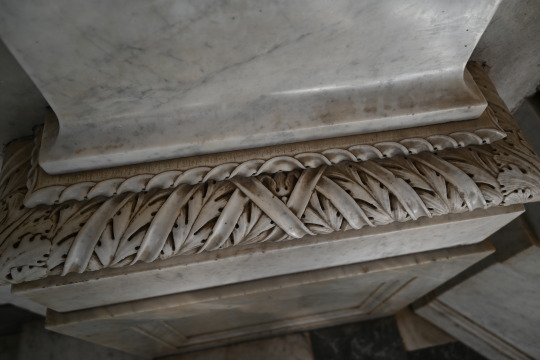
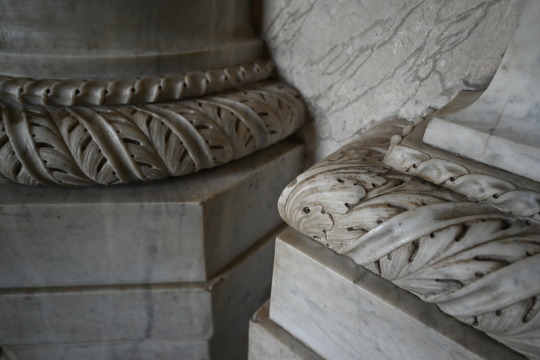
These are highly enriched bases to Doric Columns and Doric Pilasters at the Vatican Museum. They are not objects in the collection. They are part of the interior architecture of the Vatican Museum. These exquisite Doric bases are specifically Roman Doric bases rather than Greek Doric. Greek Doric columns do not have bases. There is an astragal, enriched with a guilloche. The torus is enriched with alternating acanthus leaves and ribbons. Notice how the pilaster base, which is based upon a square rather than a circle, has the ribbons and acanthi coming together to join in the middle.
#Vatican Museum#Musei Vaticani#Doric Order#Doric Base#astragal#torus#acanthus#ribbon#enrichment#architecture#architectural enrichment#guilloche#non-MJ
2 notes
·
View notes
Text
Miles' guitar in 505 is the anchor to the ship that carries Alex's voice.
#arctic monkeys#505#alex turner#miles kane#milex#Its heartbreaking how well they compliment each other#a fragile voice against a solid guitar#ionic and doric order#yin and yang
54 notes
·
View notes
Text
ANYOTHER CLASSICAL ARCHITECTURE FANS OUT HERE?!??!??
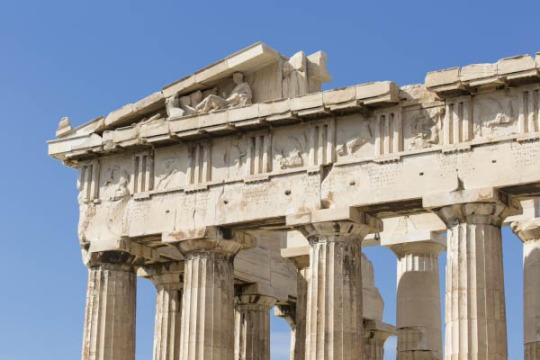
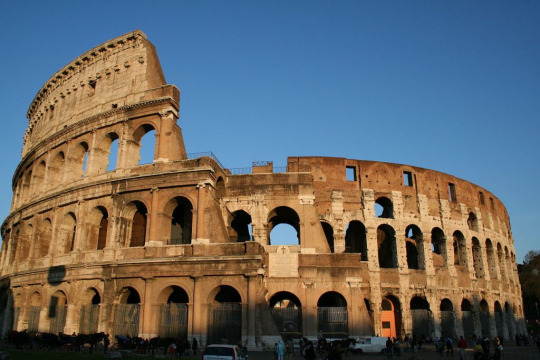
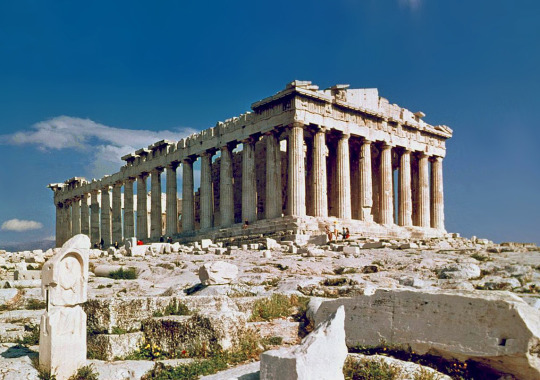


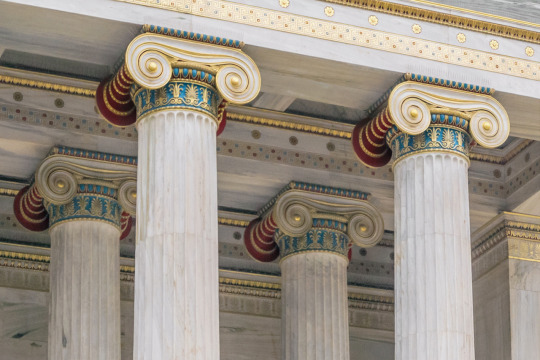
DOES ANYONE HERE GET ME . DO U GUYS UNDERSTNAD !!!
#architecture#classical architecture#the tag is so EMPTY wgere is everybody.........#surely im not the only one who experienced a massive classical architecture phase throughout middle school that never really went away#surely that is an universal experience . right#helloooooo#oka y im going to bed now <3<3<3 thinkign abt her (the limitless variety in corinthian capitals)#ALSO doric order has tboy swag . to me . i am not projecting onto my favorite order (<- lying)
24 notes
·
View notes
Note
Oh! What languages does Kitty know? Is English her first language? How well/fast do you think she'd pick up on other languages?
//Kitty's first language is English. I think if she were to learn another or know the most phrases in another, it would be Spanish since she's from California. In the UK most people learn European Spanish but I think Kitty would learn South American Spanish, probably through Mexican Spanish audio tapes or watching telenovellas and dubbed cartoons. Although I can also see her learning Dutch or German since she found out her grandparents were from The Netherlands (mother's side) and Germany (father's side.) Perhaps in emigrating they were even fleeing the onset of the Second World War?
Kitty might be quick to pick up phrases but struggle with some pronounciation. She'd be stronger in some languages more than others, for example she'd find any language with a totally different alphabet quite tricky as an English speaker. But then she'd remind herself if the Chinese exchange student in her class can learn English why shouldn't she push herself to learn Dutch?
I think in terms of which language she thinks sounds the nicest to the ear, it would probably be French. French and Belgian cartoons have such an elegance, class and charming wit about them. Oh God imagine her bumping into TinTin 😂
#marinerainbow#kitty hawkins#about kitty#//this is coming from someone who has tried to learn like three languages at once and ended up remembering a lot of vocab#//...but then butchering the word order#//I'm quite good at picking up German because it's similar to Scots/Doric which my familh speaks#//Also practiced Scottish Gaelic Greek and Spanish#//As someone who also has English as a first language I do not envy people trying to learn it! 😅#//Oh and Japanese I love the way Japanese sounds
2 notes
·
View notes
Photo

Porch - Traditional Porch
Huge classic stone back porch idea with a roof extension
0 notes
Photo
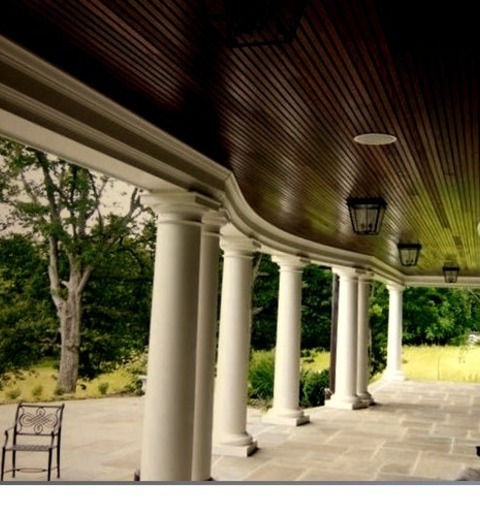
New York Backyard
Huge classic stone back porch idea with a roof extension
0 notes
Text
cw: arranged marriage, fluff, neglect at the beginning, ratio falling hard, pining, ratio being jealous of aventurine, unedited bc i wrote this with my heart not my brain
my brain has been thinking about an arranged marriage fic with dr. ratio...
he isn't kind to you at first, less than happy to share a life with a mere acquaintance. he's heard about you before in passing, noting your achievements with a grain of salt because nothing about you particularly mattered to him, irrelevant against the mass of scrolls and books he needs to read.
you don't really disturb his normal routine too much. you move in to his estate with a fair share of your belongings, but none of them crowd his house too much. you have your own room, pristine guest room unearthed by your artistic touch.
aside from dinners, you don't get to see each other too much. he starts his mornings early, getting up at the crack of dawn to exercise and start his day with a hearty meal. you wake up later, partaking in a slow morning, and if you glanced out the window, you might be able to see your husband running laps around the expanse of his gardens.
you admire his dedication and routine, it's fascinating to live beside a genius. everyday, the chest table that sits in the living room changes, the black and white pieces never remaining where you last recalled. the size of his blackboard is impressive, and yet too small to fit all of the formulas his brain remembers, hands effortlessly dancing along the surface to scratch number after number.
a frequent order of his estate is chalk. a new pile is delivered every three days, and he goes through them without fail every time.
during dinner, he tries to spare some conversation with you. you don't tell him too much about your day, not wanting to bore him with your menial chores. he's only half-listening either way, so you'll feign understanding about his work when he explains what he's up to.
ratio is not an attentive husband, but he doesn't mistreat you, either. he allows you to spend his assets without too much care, doesn't police your everyday tasks, and also doesn't bat an eye at other men or women. his pursuit of intelligence is important, and your wellbeing would not come in between that.
your monotonous, distant routine changes one autumn dusk. you're perched in the front yard with an easel set up before you, the sky in front of you now a blend of pink-purple hues. he returns home earlier than you expected, carriage stopping at the front of his estate, and he witnesses you in your tranquil state.
the paint strokes on the canvas before you are skilled, and show years of dedication to the craft. you're so invested in the piece before you, that you don't even hear him approaching until he calls your name.
"the night turns colder with each minute. shouldn't you come inside before you fall ill?" the scholar greets, and you're snapped out of your creative reverie, looking over at him.
"oh, i had not realised. let me clean up here, first." you take your canvas off the easel, but to your surprise, your spouse kneels down to organise your oil paints back into their box.
"make haste, then," he urges.
during dinner, he can't help but be curious over your hobby, the stubborn splotches of paint clinging to your hands visible to him. that night, you engage in uninterrupted conversation, and discover that he's an artist himself- a sculptor. it calms him, and all the statues reside in a removed room, adjacent to his study.
despite your years of matrimony, you had never once dared enter his study, but the design is so fittingly him. it is organised (well, as organised a genius can be), with shelves and shelves filled with books, discarded scrolls lay around the room, but even then, his taste for greco-roman aesthetics are seen. roman dorics act like stands for little plants, and his many certificates are displayed, along with other achievements.
(his study is overwhelmingly filled with them. though you knew of the merit of the man you were arranged to be married to, you had never known just how expansive the list is. perhaps, that only made him more intimidating to you, standing beside a genius does not feel so light to say anymore.)
he shows you his sculptures, and though many of them are... self portraits... the likeness is disgustingly accurate. it was as if he had casted himself in plaster and displayed it proudly. you wonder how long he must have stared in the mirror to perfect their appearance.
but, there are also various other formidable statues. some of people you recognise. you compliment his skill and don't get to see the blush that spreads along his cheeks.
it seems that you've chipped a way into his heart, because between brushstrokes and chiselled marble, he falls in love with you.
ratio knows he didn't start off being the best husband, but he tries to now, and begins by being present. asks you to dine together where possible, listens when you're talking about your day, and the two of you can be seen venturing downtown together; an unbelievable sight for those who believed that ratio was romantically inept.
perhaps, an even more unbelievable sight, was the soft smile on his face that glanced at you very adoringly, and how you remained unaware of his affections.
and, maybe a jealous veritas ratio is just as unbelievable.
he is practically glaring daggers at the side of a certain blond's head. ratio has never been fond of the scheming businessman, aventurine, and is even less so of the fact that you seem so close to him, more than you are with your own husband. you're speaking with him like how one would with old friends, a peaceful visit to the markets turned sour by his presence.
when you finally, finally, finally, bid farewell to aventurine, who gave ratio a look that signified he was up to no good, your husband held your hand in his gloved one with an unforgiving grip. his mood is dampened for the remainder of the day, and is only made better when you enquire about his sudden glumness, visiting his office to see if he was alright.
you leave him with a kiss on the crown of his head, and a whisper of 'goodnight', before retreating to your chambers, and the only thought that circulates in his head for the rest of the night is you, and how he's going to sweep you off your feet.
#*ੈ✩‧₊˚ earf's ideas that i'll never write#earthtooz: honkai star rail#dr ratio x reader#veritas ratio x reader#honkai star rail x reader#hsr x reader#ratio x reader#dr ratio fluff#dr. ratio x reader
3K notes
·
View notes
Text
Fantasy Guide to Interiors



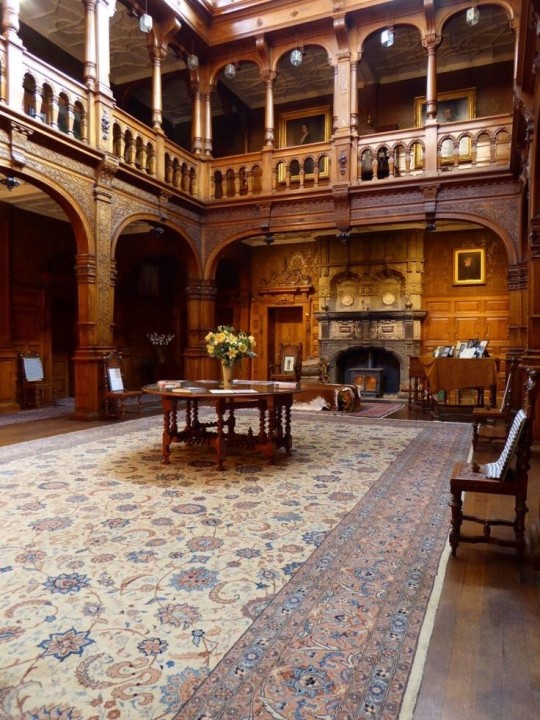
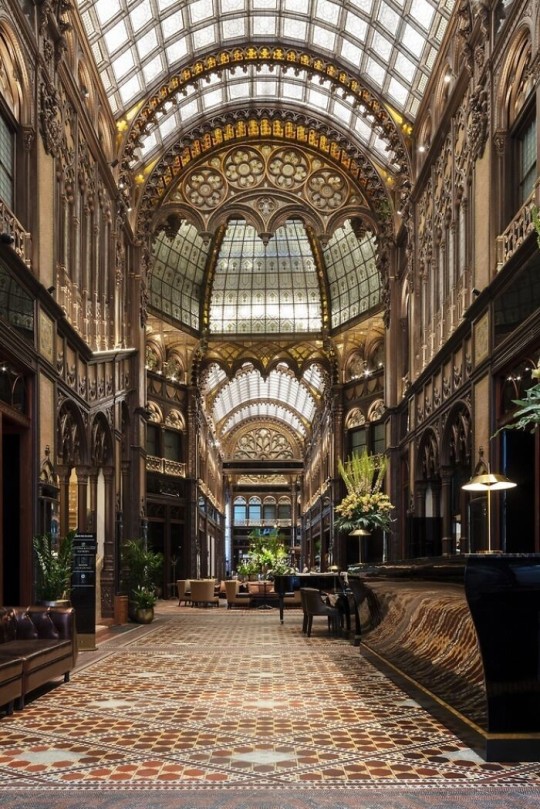
As a followup to the very popular post on architecture, I decided to add onto it by exploring the interior of each movement and the different design techniques and tastes of each era. This post at be helpful for historical fiction, fantasy or just a long read when you're bored.
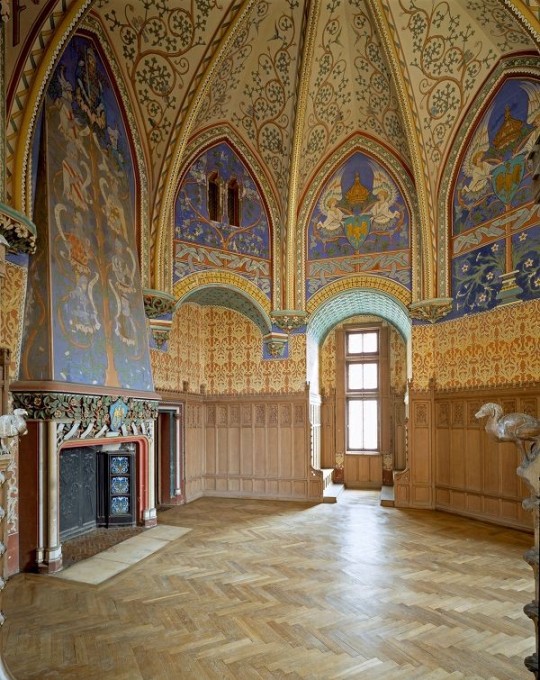


Interior Design Terms
Reeding and fluting: Fluting is a technique that consists a continuous pattern of concave grooves in a flat surface across a surface. Reeding is it's opposite.
Embossing: stamping, carving or moulding a symbol to make it stand out on a surface.
Paneling: Panels of carved wood or fabric a fixed to a wall in a continuous pattern.
Gilding: the use of gold to highlight features.
Glazed Tile: Ceramic or porcelain tiles coated with liquid coloured glass or enamel.
Column: A column is a pillar of stone or wood built to support a ceiling. We will see more of columns later on.
Bay Window: The Bay Window is a window projecting outward from a building.
Frescos: A design element of painting images upon wet plaster.
Mosaic: Mosaics are a design element that involves using pieces of coloured glass and fitted them together upon the floor or wall to form images.
Mouldings: ornate strips of carved wood along the top of a wall.
Wainscoting: paneling along the lower portion of a wall.
Chinoiserie: A European take on East Asian art. Usually seen in wallpaper.
Clerestory: A series of eye-level windows.
Sconces: A light fixture supported on a wall.
Niche: A sunken area within a wall.
Monochromatic: Focusing on a single colour within a scheme.
Ceiling rose: A moulding fashioned on the ceiling in the shape of a rose usually supporting a light fixture.
Baluster: the vertical bars of a railing.
Façade: front portion of a building
Lintel: Top of a door or window.
Portico: a covered structure over a door supported by columns
Eaves: the part of the roof overhanging from the building
Skirting: border around lower length of a wall
Ancient Greece
Houses were made of either sun-dried clay bricks or stone which were painted when they dried. Ground floors were decorated with coloured stones and tiles called Mosaics. Upper level floors were made from wood. Homes were furnished with tapestries and furniture, and in grand homes statues and grand altars would be found. Furniture was very skillfully crafted in Ancient Greece, much attention was paid to the carving and decoration of such things. Of course, Ancient Greece is ancient so I won't be going through all the movements but I will talk a little about columns.
Doric: Doric is the oldest of the orders and some argue it is the simplest. The columns of this style are set close together, without bases and carved with concave curves called flutes. The capitals (the top of the column) are plain often built with a curve at the base called an echinus and are topped by a square at the apex called an abacus. The entablature is marked by frieze of vertical channels/triglyphs. In between the channels would be detail of carved marble. The Parthenon in Athens is your best example of Doric architecture.
Ionic: The Ionic style was used for smaller buildings and the interiors. The columns had twin volutes, scroll-like designs on its capital. Between these scrolls, there was a carved curve known as an egg and in this style the entablature is much narrower and the frieze is thick with carvings. The example of Ionic Architecture is the Temple to Athena Nike at the Athens Acropolis.
Corinthian: The Corinthian style has some similarities with the Ionic order, the bases, entablature and columns almost the same but the capital is more ornate its base, column, and entablature, but its capital is far more ornate, commonly carved with depictions of acanthus leaves. The style was more slender than the others on this list, used less for bearing weight but more for decoration. Corinthian style can be found along the top levels of the Colosseum in Rome.
Tuscan: The Tuscan order shares much with the Doric order, but the columns are un-fluted and smooth. The entablature is far simpler, formed without triglyphs or guttae. The columns are capped with round capitals.
Composite: This style is mixed. It features the volutes of the Ionic order and the capitals of the Corinthian order. The volutes are larger in these columns and often more ornate. The column's capital is rather plain. for the capital, with no consistent differences to that above or below the capital.
Ancient Rome
Rome is well known for its outward architectural styles. However the Romans did know how to add that rizz to the interior. Ceilings were either vaulted or made from exploded beams that could be painted. The Romans were big into design. Moasics were a common interior sight, the use of little pieces of coloured glass or stone to create a larger image. Frescoes were used to add colour to the home, depicting mythical figures and beasts and also different textures such as stonework or brick. The Romans loved their furniture. Dining tables were low and the Romans ate on couches. Weaving was a popular pastime so there would be tapestries and wall hangings in the house. Rich households could even afford to import fine rugs from across the Empire. Glass was also a feature in Roman interior but windows were usually not paned as large panes were hard to make. Doors were usually treated with panels that were carved or in lain with bronze.
Ancient Egypt
Egypt was one of the first great civilisations, known for its immense and grand structures. Wealthy Egyptians had grand homes. The walls were painted or plastered usually with bright colours and hues. The Egyptians are cool because they mapped out their buildings in such a way to adhere to astrological movements meaning on special days if the calendar the temple or monuments were in the right place always. The columns of Egyptian where thicker, more bulbous and often had capitals shaped like bundles of papyrus reeds. Woven mats and tapestries were popular decor. Motifs from the river such as palms, papyrus and reeds were popular symbols used.
Ancient Africa
African Architecture is a very mixed bag and more structurally different and impressive than Hollywood would have you believe. Far beyond the common depictions of primitive buildings, the African nations were among the giants of their time in architecture, no style quite the same as the last but just as breathtaking.
Rwandan Architecture: The Rwandans commonly built of hardened clay with thatched roofs of dried grass or reeds. Mats of woven reeds carpeted the floors of royal abodes. These residences folded about a large public area known as a karubanda and were often so large that they became almost like a maze, connecting different chambers/huts of all kinds of uses be they residential or for other purposes.
Ashanti Architecture: The Ashanti style can be found in present day Ghana. The style incorporates walls of plaster formed of mud and designed with bright paint and buildings with a courtyard at the heart, not unlike another examples on this post. The Ashanti also formed their buildings of the favourite method of wattle and daub.
Nubian Architecture: Nubia, in modern day Ethiopia, was home to the Nubians who were one of the world's most impressive architects at the beginning of the architecture world and probably would be more talked about if it weren't for the Egyptians building monuments only up the road. The Nubians were famous for building the speos, tall tower-like spires carved of stone. The Nubians used a variety of materials and skills to build, for example wattle and daub and mudbrick. The Kingdom of Kush, the people who took over the Nubian Empire was a fan of Egyptian works even if they didn't like them very much. The Kushites began building pyramid-like structures such at the sight of Gebel Barkal
Japanese Interiors
Japenese interior design rests upon 7 principles. Kanso (簡素)- Simplicity, Fukinsei (不均整)- Asymmetry, Shizen (自然)- Natural, Shibumi (渋味) – Simple beauty, Yugen (幽玄)- subtle grace, Datsuzoku (脱俗) – freedom from habitual behaviour, Seijaku (静寂)- tranquillity.
Common features of Japanese Interior Design:
Shoji walls: these are the screens you think of when you think of the traditional Japanese homes. They are made of wooden frames, rice paper and used to partition
Tatami: Tatami mats are used within Japanese households to blanket the floors. They were made of rice straw and rush straw, laid down to cushion the floor.
Genkan: The Genkan was a sunken space between the front door and the rest of the house. This area is meant to separate the home from the outside and is where shoes are discarded before entering.
Japanese furniture: often lowest, close to the ground. These include tables and chairs but often tanked are replaced by zabuton, large cushions. Furniture is usually carved of wood in a minimalist design.
Nature: As both the Shinto and Buddhist beliefs are great influences upon architecture, there is a strong presence of nature with the architecture. Wood is used for this reason and natural light is prevalent with in the home. The orientation is meant to reflect the best view of the world.
Islamic World Interior
The Islamic world has one of the most beautiful and impressive interior design styles across the world. Colour and detail are absolute staples in the movement. Windows are usually not paned with glass but covered in ornate lattices known as jali. The jali give ventilation, light and privacy to the home. Islamic Interiors are ornate and colourful, using coloured ceramic tiles. The upper parts of walls and ceilings are usually flat decorated with arabesques (foliate ornamentation), while the lower wall areas were usually tiled. Features such as honeycombed ceilings, horseshoe arches, stalactite-fringed arches and stalactite vaults (Muqarnas) are prevalent among many famous Islamic buildings such as the Alhambra and the Blue Mosque.
Byzantine (330/395–1453 A. D)
The Byzantine Empire or Eastern Roman Empire was where eat met west, leading to a melting pot of different interior designs based on early Christian styles and Persian influences. Mosaics are probably what you think of when you think of the Byzantine Empire. Ivory was also a popular feature in the Interiors, with carved ivory or the use of it in inlay. The use of gold as a decorative feature usually by way of repoussé (decorating metals by hammering in the design from the backside of the metal). Fabrics from Persia, heavily embroidered and intricately woven along with silks from afar a field as China, would also be used to upholster furniture or be used as wall hangings. The Byzantines favoured natural light, usually from the use of copolas.
Indian Interiors
India is of course, the font of all intricate designs. India's history is sectioned into many eras but we will focus on a few to give you an idea of prevalent techniques and tastes.
The Gupta Empire (320 – 650 CE): The Gupta era was a time of stone carving. As impressive as the outside of these buildings are, the Interiors are just as amazing. Gupta era buildings featured many details such as ogee (circular or horseshoe arch), gavaksha/chandrashala (the motif centred these arches), ashlar masonry (built of squared stone blocks) with ceilings of plain, flat slabs of stone.
Delhi Sultanate (1206–1526): Another period of beautifully carved stone. The Delhi sultanate had influence from the Islamic world, with heavy uses of mosaics, brackets, intricate mouldings, columns and and hypostyle halls.
Mughal Empire (1526–1857): Stonework was also important on the Mughal Empire. Intricately carved stonework was seen in the pillars, low relief panels depicting nature images and jalis (marble screens). Stonework was also decorated in a stye known as pietra dura/parchin kari with inscriptions and geometric designs using colored stones to create images. Tilework was also popular during this period. Moasic tiles were cut and fitted together to create larger patters while cuerda seca tiles were coloured tiles outlined with black.
Chinese Interiors
Common features of Chinese Interiors
Use of Colours: Colour in Chinese Interior is usually vibrant and bold. Red and Black are are traditional colours, meant to bring luck, happiness, power, knowledge and stability to the household.
Latticework: Lattices are a staple in Chinese interiors most often seen on shutters, screens, doors of cabinets snf even traditional beds.
Lacquer: Multiple coats of lacquer are applied to furniture or cabinets (now walls) and then carved. The skill is called Diaoqi (雕漆).
Decorative Screens: Screens are used to partition off part of a room. They are usually of carved wood, pained with very intricate murals.
Shrines: Spaces were reserved on the home to honour ancestors, usually consisting of an altar where offerings could be made.
Of course, Chinese Interiors are not all the same through the different eras. While some details and techniques were interchangeable through different dynasties, usually a dynasty had a notable style or deviation. These aren't all the dynasties of course but a few interesting examples.
Song Dynasty (960–1279): The Song Dynasty is known for its stonework. Sculpture was an important part of Song Dynasty interior. It was in this period than brick and stone work became the most used material. The Song Dynasty was also known for its very intricate attention to detail, paintings, and used tiles.
Ming Dynasty(1368–1644): Ceilings were adorned with cloisons usually featuring yellow reed work. The floors would be of flagstones usually of deep tones, mostly black. The Ming Dynasty favoured richly coloured silk hangings, tapestries and furnishings. Furniture was usually carved of darker woods, arrayed in a certain way to bring peace to the dwelling.
Han Dynasty (206 BC-220 AD): Interior walls were plastered and painted to show important figures and scenes. Lacquer, though it was discovered earlier, came into greater prominence with better skill in this era.
Tang Dynasty (618–907) : The colour palette is restrained, reserved. But the Tang dynasty is not without it's beauty. Earthenware reached it's peak in this era, many homes would display fine examples as well. The Tang dynasty is famous for its upturned eaves, the ceilings supported by timber columns mounted with metal or stone bases. Glazed tiles were popular in this era, either a fixed to the roof or decorating a screen wall.
Romanesque (6th -11th century/12th)
Romanesque Architecture is a span between the end of Roman Empire to the Gothic style. Taking inspiration from the Roman and Byzantine Empires, the Romanesque period incorporates many of the styles. The most common details are carved floral and foliage symbols with the stonework of the Romanesque buildings. Cable mouldings or twisted rope-like carvings would have framed doorways. As per the name, Romansque Interiors relied heavily on its love and admiration for Rome. The Romanesque style uses geometric shapes as statements using curves, circles snf arches. The colours would be clean and warm, focusing on minimal ornamentation.
Gothic Architecture (12th Century - 16th Century)
The Gothic style is what you think of when you think of old European cathedrals and probably one of the beautiful of the styles on this list and one of most recognisable. The Gothic style is a dramatic, opposing sight and one of the easiest to describe. Decoration in this era became more ornate, stonework began to sport carving and modelling in a way it did not before. The ceilings moved away from barreled vaults to quadripartite and sexpartite vaulting. Columns slimmed as other supportive structures were invented. Intricate stained glass windows began their popularity here. In Gothic structures, everything is very symmetrical and even.
Mediaeval (500 AD to 1500)
Interiors of mediaeval homes are not quite as drab as Hollywood likes to make out. Building materials may be hidden by plaster in rich homes, sometimes even painted. Floors were either dirt strewn with rushes or flagstones in larger homes. Stonework was popular, especially around fireplaces. Grand homes would be decorated with intricate woodwork, carved heraldic beasts and wall hangings of fine fabrics.
Renaissance (late 1300s-1600s)
The Renaissance was a period of great artistry and splendor. The revival of old styles injected symmetry and colour into the homes. Frescoes were back. Painted mouldings adorned the ceilings and walls. Furniture became more ornate, fixed with luxurious upholstery and fine carvings. Caryatids (pillars in the shape of women), grotesques, Roman and Greek images were used to spruce up the place. Floors began to become more intricate, with coloured stone and marble. Modelled stucco, sgraffiti arabesques (made by cutting lines through a layer of plaster or stucco to reveal an underlayer), and fine wall painting were used in brilliant combinations in the early part of the 16th century.
Tudor Interior (1485-1603)
The Tudor period is a starkly unique style within England and very recognisable. Windows were fixed with lattice work, usually casement. Stained glass was also in in this period, usually depicting figures and heraldic beasts. Rooms would be panelled with wood or plastered. Walls would be adorned with tapestries or embroidered hangings. Windows and furniture would be furnished with fine fabrics such as brocade. Floors would typically be of wood, sometimes strewn with rush matting mixed with fresh herbs and flowers to freshen the room.
Baroque (1600 to 1750)
The Baroque period was a time for splendor and for splashing the cash. The interior of a baroque room was usually intricate, usually of a light palette, featuring a very high ceiling heavy with detail. Furniture would choke the room, ornately carved and stitched with very high quality fabrics. The rooms would be full of art not limited to just paintings but also sculptures of marble or bronze, large intricate mirrors, moldings along the walls which may be heavily gilded, chandeliers and detailed paneling.
Victorian (1837-1901)
We think of the interiors of Victorian homes as dowdy and dark but that isn't true. The Victorians favoured tapestries, intricate rugs, decorated wallpaper, exquisitely furniture, and surprisingly, bright colour. Dyes were more widely available to people of all stations and the Victorians did not want for colour. Patterns and details were usually nature inspired, usually floral or vines. Walls could also be painted to mimic a building material such as wood or marble and most likely painted in rich tones. The Victorians were suckers for furniture, preferring them grandly carved with fine fabric usually embroidered or buttoned. And they did not believe in minimalism. If you could fit another piece of furniture in a room, it was going in there. Floors were almost eclusively wood laid with the previously mentioned rugs. But the Victorians did enjoy tiled floors but restricted them to entrances. The Victorians were quite in touch with their green thumbs so expect a lot of flowers and greenery inside. with various elaborately decorated patterned rugs. And remember, the Victorians loved to display as much wealth as they could. Every shelf, cabinet, case and ledge would be chocked full of ornaments and antiques.
Edwardian/The Gilded Age/Belle Epoque (1880s-1914)
This period (I've lumped them together for simplicity) began to move away from the deep tones and ornate patterns of the Victorian period. Colour became more neutral. Nature still had a place in design. Stained glass began to become popular, especially on lampshades and light fixtures. Embossing started to gain popularity and tile work began to expand from the entrance halls to other parts of the house. Furniture began to move away from dark wood, some families favouring breathable woods like wicker. The rooms would be less cluttered.
Art Deco (1920s-1930s)
The 1920s was a time of buzz and change. Gone were the refined tastes of the pre-war era and now the wow factor was in. Walls were smoother, buildings were sharper and more jagged, doorways and windows were decorated with reeding and fluting. Pastels were in, as was the heavy use of black and white, along with gold. Mirrors and glass were in, injecting light into rooms. Gold, silver, steel and chrome were used in furnishings and decor. Geometric shapes were a favourite design choice. Again, high quality and bold fabrics were used such as animal skins or colourful velvet. It was all a rejection of the Art Noveau movement, away from nature focusing on the man made.
Modernism (1930 - 1965)
Modernism came after the Art Deco movement. Fuss and feathers were out the door and now, practicality was in. Materials used are shown as they are, wood is not painted, metal is not coated. Bright colours were acceptable but neutral palettes were favoured. Interiors were open and favoured large windows. Furniture was practical, for use rather than the ornamentation, featuring plain details of any and geometric shapes. Away from Art Deco, everything is straight, linear and streamlined.
#This took forever#I'm very tired#But enjoy#I covered as much as I could find#Fantasy Guide to interiors#interior design#Architecture#writings#writing resources#Writing reference#Writing advice#Writer's research#writing research#Writer's rescources#Writing help#Mediaeval#Renaissance#Chinese Interiors#Japanese Interiors#Indian interiors#writing#writeblr#writing reference#writing advice#writer#spilled words#writers
3K notes
·
View notes
Text
xenk: if you got arrested, what would be the charges?
edgin: theft
simon: disturbin the peace
holga: aggravated assault
doric: arson
kira: all the above. in that order, probably
edgin:
#dnd honor among thieves#honor among thieves#dungeons and dragons honor among thieves#dungeons and dragons movie#d&d: honor among theives as text posts#incorrect quotes#dnd movie#dungeons and dumbasses#dndhat incorrect quotes#edgin the bard#holga the barbarian#simon the sorcerer#doric the druid#xenk the paladin#kira darvis#xedgin#edgin x xenk#palabard#the party#kira and her two dads#kira and her three parents#kira and her big brother#kira and her sister#this girl has such a big family
405 notes
·
View notes
Text
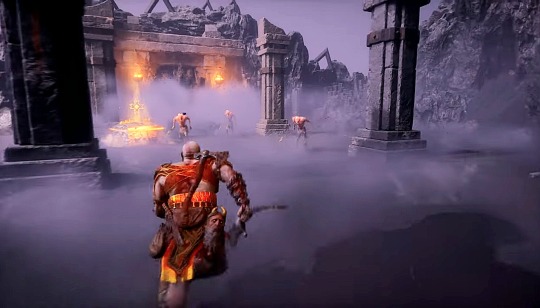







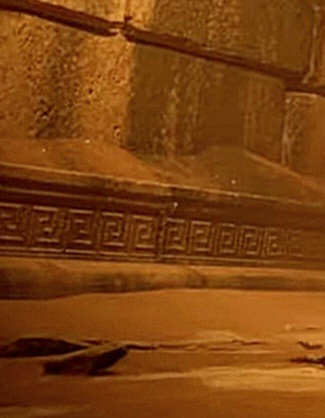
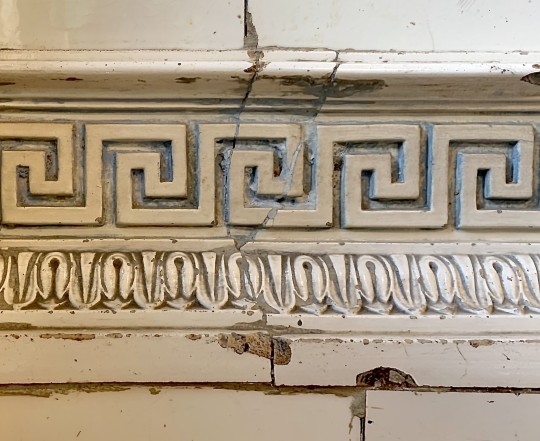
Details I noticed in the GOW: Ragnarök Valhalla DLC trailer
This one is obvious but there are Greek pillars in one of the fighting arenas (I believe it's in the Doric Order style). After that there's a Norse rune on top of the legendary chest, that looks like the rune Ingwaz (correct me if I'm wrong tho). So from my little bit of research, the rune symbolizes a seed/egg and means male fertility (sex mini-game confirmed?), change, growth, and a bunch of other things. Next, I saw the letter Lambda (Λ) which is a symbol that represents Sparta on the rocks. Lastly, I saw the Meander art pattern on the walls where the Cyclops is, which is a common decorative border design in Greece. Btw if you don't know the Cyclops is a common enemy type in the Greek GOW games.
#NonnTalks#I'm dissecting every frame of this trailer#Y'all ain't ready for how annoying I'm gonna get#GOW#God of War#GOW Ragnarök#God of War Ragnarök#GOW DLC#God of War DLC#GOW Valhalla#God of War Valhalla#GOW Ragnarök Valhalla#God of War Ragnarök Valhalla#Kratos#GOW Kratos#Kratos GOW#God of War Kratos#Kratos God of War
138 notes
·
View notes
Text
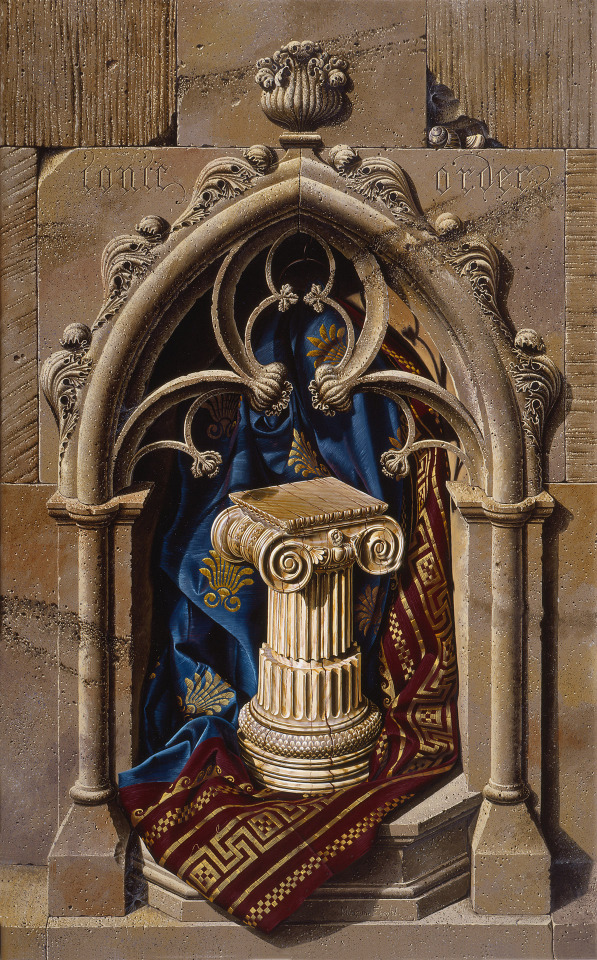


The Three Sacred Orders
The Ionic Order, The Corinthian Order, The Doric Order
by Miriam Escofet
#miriam escofet#art#sacred#orders#esoteric#ancient greece#ancient greek#europe#ionic#corinthian#doric#architecture#classical#classical antiquity
184 notes
·
View notes
Text
Doric the Druid Relationship Headcanons

Fandom: Dungeons and Dragons: Honor Among Thieves
Doric is very ambitious, taking the initiative and not backing down even if you're not too sure about what you're getting into. Your life with her is definitely exciting.
Often aiding her to the best of your abilities in trying to stop the deforestation and Forge's tyranny, and trying to comfort her when it seems hopeless.
When she's asked to join a ragtag crew planning to take down Forge, she glances to you for input. You're a team and she wants your opinion and if you think this at all seems worth it.
But he's right, nothing you've done has worked so far.
Simon's a little (extra, extra) awkward about it all since it wasn't long ago he tried courting you both, only to realize you were already an item. Still crushing hard though. Tries to 'ease the tension'.
A playful lover, while she isn't touchy and cuddly a lot of the time, she's fun and teasing.
Will tap you shoulder and pretend she's completely innocent.
Dragging you out to bathe in a river by moonlight.
The first time she took you on an impromptu flight, shifting into a huge eagle and lifting you from the ground, you screamed and swore to fry her like a chicken. You swear you could hear your beloved bird laughing at you.
Sharing food and drink. Even if you have enough for separate meals, she'll order one drink to keep sharing from.
One of the fluffiest things about her is certainly her wildshape, and with Owlbear being one of her favorite forms, you often get to cuddle her as a hulking feathery beast.
Very good on chilly nights, pressed against her soft down stomach and hearing little trills as she sleeps, you wont feel the chill in the coldest of places.
Doric isn't the most "soft and cuddly" type of person, but you are clearly her soft spot.
She likes curling up with you by firelight and telling you stories the elves taught her, and sharing ones of her shenanigans when she was younger.
Very touchy, even if it's fleeting. Her hand will trail along you shoulders or down your arm, leaning her head on you, little touches and being close to you.
Sitting beside her is more with her thigh pressed to yours and one ankle hooked around yours under the table.
Though you both know the other is competent, never leaving each other in a dangerous situation, you'll face things together, even if it's not the quickest route.
The others get a little annoyed by this until they see how efficient a team you make, you've been side by side for so long.
Praising her for being badass because with a girlfriend so cool, you have to talk about it. Bonding with Simon over this.
She's very forward and likes to try flustering you. If you're the flirtatious type, this definitely turns into a competition.
Admiring Holga together. This is a pass time.
"Did you see her just..?"
"Yeah."
Debating on if you could convince her to crack open a watermelon.
#Doric the Druid x reader#Doric the Druid imagine#Dungeons & Dragons: Honor Among Thieves#Dungeons & Dragons Honor Among Thieves x reader#Dungeons & Dragons Honor Among Thieves imagine#D&D Hat x reader#D&D Hat imagine#my stuff
154 notes
·
View notes
Text

Holding Out for a Hero: Part 1
"Fine, I'll do it myself"
After watching the D&D movie yesterday, I have had *brain rot* for Xenk Yendar. And no fic has been posted. I want romance. And you know what they say - If you want something done right, you have to do it yourself. Probably will be multiple parts if the writing bug bites again.
Please be kind, I haven't published fanfic in years, and never on Tumblr.
After defeating Sofina and saving Neverwinter from the Wizards of Thay, the Thieves did try to lead a normal life.
Honestly.
However, it wasn't a surprise when on more than one occasion, Thay assassins showed up to try and kill them. So often in fact, that they had to constantly travel in order to stay ahead of their hunters, who would reanimate within hours of being killed, no matter how bloody Holga or Doric made the scene. They had made an enemy of Szass Tam after all, and he was not the forgiving sort.
Finding a letter on the corpse of their last assassin (they had taken to "liberating" all of their would-be killers' belongings before they were able to revive, as it really delayed the next time they would meet) showed that the tide of undead assassins would not be slowing any time soon. By order of Szass Tam, they were to be killed in the most painful ways imaginable with a mighty prize to whoever was successful.
So Edgin and the troop once again tracked down the illustrious Xenk Yendar to find a way to put the assassins in the ground, permanently. You couldn't always count on an overfed dragon to do the job for you.
"What do you mean, a cleric? Clerics are healers!"
Xenk turned to face Edgin. "Clerics are the holy warriors of the gods. They can use the light to perform miracles, yes, but they also can harness the gifts they have been given against the undead in ways unparalleled by even the mightiest warrior or wizard."
"For the record," Simon spoke up from behind Edgin, "I also thought they just stayed in their temples healing people. So do we just stay at one until they catch up with us again?"
While it would offer the party safety, as temples are normally built or given hallowed ground and no undead can step foot there, it was decided (mainly by Edgin) that they would have to set a trap if they wanted these assassins gone for good. And they would need a cleric. The only connection they had to a holy order was the Emerald Enclave, who supposedly had dealings in the past with a traveling cleric.
There had been a small faction of the Church of Eternal Winter which had frozen a swath of land in their forest. This cleric had come through and removed the taint of Auril and in return was given a seedling of their largest oak tree and a promise of a place to rest whenever they passed through the area. According to Doric, the cleric was an elf, though she didn't know which god she was in service to. The last time they had passed through was before Doric was born.
Their journey brought them to Loudwater, the city of grottos. In searching and questioning in the section of the city populated by elves, they did not receive a warm welcome. Asking around at the many temples of Lathander and other woodland gods, there were no clerics who traveled or were willing to leave on such a dangerous quest. The party upon exiting was stopped by an orcish man.
"Sounds like Lyra. Why are you looking for her anyway?" He looked the party up and down with suspicion. "She hasn't done anything wrong."
Edgin served his role as face of the party. "No, of course not, it's just that-"
"We heard she can kill our enemies."
"HOLGA!"
After the misunderstanding was cleared, the orc who introduced himself as Zedroar Brittlebone brought them out to the Forestview Gate and into the town of tents and other less permanent structures where the orcs who labored in the fields had lived for a long time.
"Lyra's been here for a while now, keeps saying she'll leave soon but always finds a reason to stay. Says there are stories left to be told but I think she'll just miss us."
As they passed through the camp they could see the relaxed atmosphere of the community that had been built. Ahead on the path, there was a whole crowd of children orcish, human, and a few mixed in of other races and combinations. They were all sitting around on blankets or each other, listening to a woman tell a story.
"And the mighty warrior let out a fierce roar, saying You'll never get her, fiend!" The children squealed with excitement and laughed at her attempt at a deep heroic voice. She was elven, most likely a sun-elf with her golden complexion. At the sight of her, Xenk began slowly backtracking but was caught by Edgin.
"What are you doing?"
"I never should have come here." His eyes never left her.
"What are you talking about? Do you know her?"
Xenk was able to pull his eyes away, and look into Edgin's soul. "If she sees me with you, she will never agree to help."
"Now wait just a minute."
"It is high time for me to return to Mornbyrn's Shield"
"You are afraid of her." Edgin knew he was right, when Xenk stopped struggling to get away.
"i am not afraid," Now Xenk wouldn't look him in the eye, "I just don't wish to reopen old wounds."
"Come on, man. We need both of you if this is going to work. Take it from someone who has had to deal with their past catching up to them almost constantly for the past few years. The only way to get closure, for whatever happened, is to face it head-on." Edgin reached a hand to where Xenk had taken cover behind one of the wooden buildings. "I'm sure she's probably forgotten about it, since you both have been around for a long time."
Approaching the group, their other companions turned to face them.
"Where were you guys?" Holga looked them both up and down suspiciously.
"Good news," Simon smiled, "Lyra agreed to help us, right?"
The elven woman turned around from gathering her things and saying goodbye to some of the children. The casual smile on her face fell as she locked eyes with the paladin.
"Xenk"
"Alariel"
#xenk yendar#xenk the paladin#honor among thieves#dungons and dragons#fanfic#OC#dnd hat#non canon#szass tam#multiple parts?#delete later maybe#xenk x oc#hofah hat 1
145 notes
·
View notes
Text
Ancient Rome - Sims 4 CC (2/5 - Build Mode)
Hi friends,
Since I started to play with the Sims 4 trying to recreate Ancient Rome, I wanted to place in a single post all the CC I found (for myself, first of all, and for anyone who might find the list useful).
I am a historian of the Ancient World, so I am quite obsessed with historical accuracy (not excessively!)
I will continue to update the posts with my finds.
Buy mode objects are here.
Decorations are here
Clothes / Hairstyles / Accessories are here.
Hobbies / activities and mods are here.
Build Mode / Deco for floors
Doric Entablature by @thejim07
Doric Marble Wall by thejim07
Doric Wall by thejim07
Doric Arches and Niches by thejim07
Doric Columns and Pilasters by thejim07
Doric Pilasters 2.0 by thejim07
Doric Pedestals by thejim07
Ionic Door by thejim07
Ionic Order Set I by thejim07
Ionic Order Set II by thejim07
The Original Column by thejim07
Corinthian Column by thejim07
Fountain Edge Set by thejim07
Roman Holiday Set by @littledica
Simple wooden door and window by mammut
Simple double wooden door by mammut
Wooden door and window by mammut
Grated windows by Felixandre
Siracusa Set by Mara45123
Minos Construction Set by philo
Minos Floors by philo
Minos Kyria Walls by philo
Minos Classical Walls by philo
Minos Dolphin Walls by philo
Minos Red Walls by philo
Minos Platforms by philo
Minos Pool trims by philo
Mega Colums by pbox
Rustic Cottage Fences by syboulette
Stone floors by mammut
Stone walls (darker) by mammut
Stone walls (lighter) by mammut
Simple stone walls by mammut
Stone walls with doves decor by mammut
Ancient Roman Tile by JCTekkSims
Classical Columns by Felixandre
Ancient Rome Murals by @historicalsimslife
Ancient Places by Helen
Ancient Roman Mosaic Rugs by AnniQ
Roman Mosai Rugs by @sortofasimblr
Ancient Greek set by @hiddenmoonsims4things
Stylish Stucco by matomibotaki
Pompeii Walls by mandarinarock
Mosaic Floors by @artyssims
Bergl Rooms by @artyssims
European Grand Tour by @artyssims
Wentworth Stone Murals 1 by Volvenom
Wentworth Stone Murals 2 by Volvenom
Wentworth Stone Murals 3 by Volvenom
Wentworth Dark Wood Stone by Volvenom
Wentworth Dark Wood Murals by Volvenom
Stucco Walls by Rirann
Orjánic Part 1 by House of Harlix
#sims 4#sims 4 cc#sims 4 historical#sims 4 ancient rome#sims 4 decades challenge#sims 4 ultimate decades challenge#sims 4 custom content#sims 4 roman times#sims 4 ancient civilization#ts4#s4cc#ts4cc
40 notes
·
View notes
Text
i tracked every spell cast in the dnd movie
(yes i am autistic how could you tell)
so first off let's get this straight: i am by no means an expert. i did, however, spend like four hours combing through spells to see which ones fit. these are the best fits i could find.
why did i do this? well because screenrant did and they did a shitty fucking job. they cited spells that dont fucking exist! shame on you! do your fucking homework! also, see previously mentioned autism.
ANYWAY! spell list (in order of appearance) under the cut!
ENCHANTMENTS: (magic items, artifacts, etc)
greater invisibility (kira's amulet)
true resurrection (tablet of awakening)
speak with dead (simon's cleric token)
dimension door (hither thither staff)
antimagic field (helm of disjunction)
SPELLS: (cast by a character)
fog cloud (simon)
chain lightning (sofina)
time stop (sofina)
counterspell (simon)
prestidigitation (sofina)
mold earth (sofina)
prestidigitation [x2] (simon)
blur (simon)
telekinesis (simon)
reverse gravity [x2] (simon)
polymorph (doric)
witch bolt (sofina)
fire bolt [a couple times] (sofina)
misty step (sofina)
fire bolt [a couple more times] (sofina)
green-flame blade (dralas)
command (xenk)
green-flame blade (dralas)
holy weapon (xenk)
prestidigitation (simon)
major image (simon)
evard's black tentacles (sofina)
tidal wave (simon)
meteor swarm (sofina)
shield (simon)
polymorph (doric)
animate objects (sofina)
misty step (sofina)
magic missile (simon)
misty step (sofina)
resilient sphere (sofina)
arcane hand (sofina)
maximilian's earthen grasp (simon)
ill be real. the fight scene that starts at 1:57:22 is fuckin hard. i cannot tell a lot of what sofina casts, i have no idea what spell she uses to disarm holga or what she does to push edgin away (twice). here is what i do know:
SIMON: magic missile, shocking grasp, scorching ray (edited)
SOFINA: gust (getting back up), shield, the spell to push edgin back twice (red curtin like thing), the spell to disarm holga
anyway back to your regularly scheduled program
gust of wind (sofina)
time stop (sofina)
counterspell (simon)
polymorph (doric)
REASONINGS / THINGS I WAS IFFY ABT:
druids can only wildshape twice per short rest. im choosing to believe that doric is just Like That, maybe she's 20th level or something
IN ADDITION, druids can only wildshape into beasts. an owlbear is a monstrosity, hence why i marked that she uses polymorph to be an owlbear.
sorcerers dont get produce flame, so im choosing to believe that when he does the finger flame thing its just prestidigitation
when xenk pulls the cat outta the fish, he could be using dominate beast if he was oath of conquest. since we dont know his subclass imma just say its command and he speaks this fish's language
FINAL THOUGHTS:
completely inaccurate. no one used fireball. /j
#dndhat#fr tho i loved this fucking movie#it exactly captured the spirit of dnd in every way#shoutout to my friend i did this with until he quite literally passed out. o7 get some rest king
89 notes
·
View notes